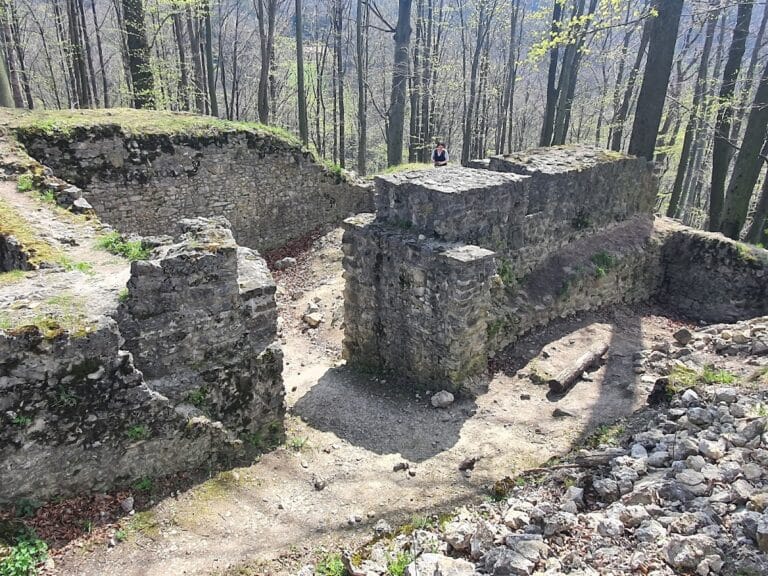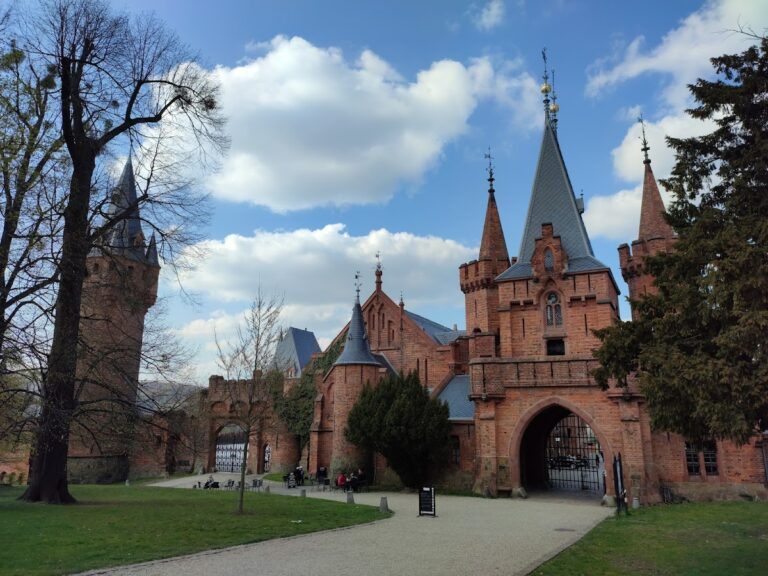Hukvaldy Castle: A Medieval Fortress in the Czech Republic
Visitor Information
Google Rating: 4.7
Popularity: Medium
Google Maps: View on Google Maps
Official Website: www.hradhukvaldy.eu
Country: Czechia
Civilization: Medieval European
Remains: Military
History
Hukvaldy Castle, situated in the village of Hukvaldy in what is today the Czech Republic, was constructed by the medieval counts of Hückeswagen in the second half of the 13th century. These counts, who also owned the nearby Starý Jičín Castle, established Hukvaldy to oversee and protect an important trade route connecting Olomouc and Kraków.
From the mid-14th century, the castle became a significant stronghold under the control of the bishops of Olomouc. Due to ongoing financial challenges, the bishops mortgaged and later redeemed the castle several times over this period. The fortress served not only as a defensive structure but also as an administrative seat related to the ecclesiastical authority in the region.
During the 15th and 16th centuries, Hukvaldy Castle changed ownership multiple times, reflecting the shifting political and social landscape of the area. Notably, the Boskovic family took possession of the castle and carried out major repairs to its fortifications. Eventually, ownership returned to the Olomouc bishopric, which maintained control until the wider nationalization efforts in 1948.
Despite numerous military confrontations, Hukvaldy Castle was never captured. It withstood a harsh nine-month siege by Danish forces in 1626 amid the Thirty Years’ War and later endured a blockade by Swedish troops. These episodes attest to the castle’s defensive resilience and strategic importance.
Water supply proved a persistent challenge for the castle’s inhabitants. The first deep well was excavated only in 1581, reaching a depth of 150 meters, followed by additional wells later in the century to secure a reliable water source.
The castle’s decline began after a devastating fire in 1738 destroyed essential water lifting and pumping installations. Another fire caused by lightning struck in 1762, destroying all wooden buildings and the castle archive. Following this event, Hukvaldy was abandoned and gradually fell into ruin.
In the 20th century, the castle was taken into state ownership after 1948, preserving its remains as part of the region’s historical heritage.
Remains
Hukvaldy Castle is situated along the elongated summit of a hill, with a fortified layout stretching roughly 320 meters in length and an outer perimeter near 800 meters. Defensive walls about two meters thick enclose the complex, strengthened by nine bastions that offered broad protection. The castle’s structure divides into six successive sections, each accessible through separate gates. The second gate currently serves as the main entrance and opens into the central courtyard.
Dominating the site is a large, round tower named Kulatina, which stands 34 meters tall and measures 25 meters in diameter. Constructed in the 13th century by Arnold von Hückenswagen, this tower constitutes the oldest part of the castle’s fortifications and exemplifies early medieval military architecture.
Within the main courtyard, visitors find a Renaissance chapel dedicated to Saint Andrew, built in 1602. This chapel is the best-preserved structure on the site, having undergone restoration in the 19th century. Noted for its fine acoustics, the chapel reflects the religious purpose and cultural changes that the castle experienced during the Renaissance.
The final courtyard of the castle is defended by two corner bastions and contains a 16th-century well originally dug to a depth of 170 meters. This well was partly filled in after the fire of 1738 but remains an important testimony to the efforts made to secure water supply.
During the late 15th and early 16th centuries, Hukvaldy’s defenses were significantly improved. Walls were thickened, bastions added, and a guard tower constructed above the entrance gate. Guardhouses were also incorporated, and the main access road was redirected to its current path, enhancing the castle’s security and control.
Sandstone quarried from the nearby Kazničov area was the primary construction material, extensively used not only in the castle walls but also in other local structures.
Surrounding the castle grounds lies a large English-style park covering over 450 hectares. Enclosed by a 19th-century boundary wall featuring a neo-Baroque gate, the park supports mature trees such as oaks, lindens, elms, and chestnuts. It provides a habitat for wildlife including mouflons, fallow deer, and sika deer, contributing to the natural setting of the historic site.










